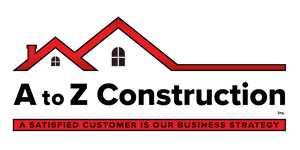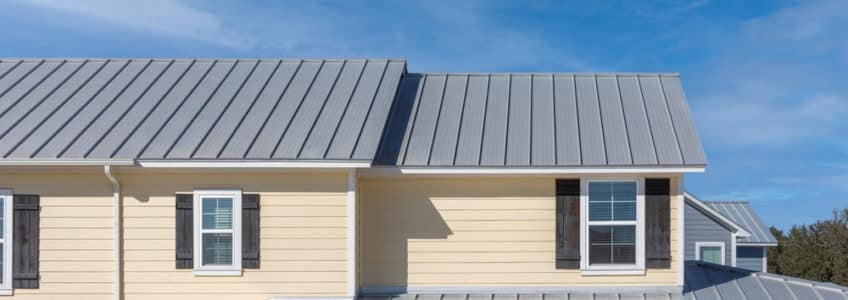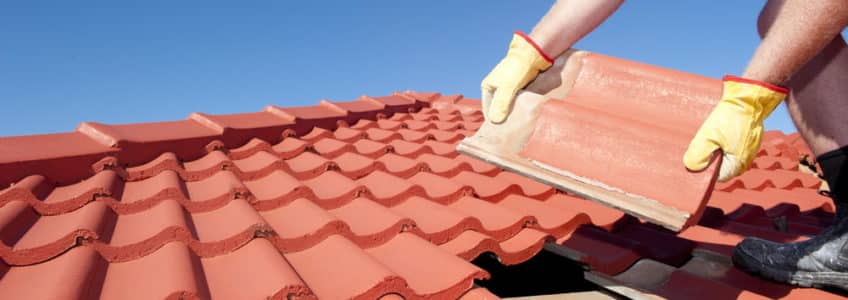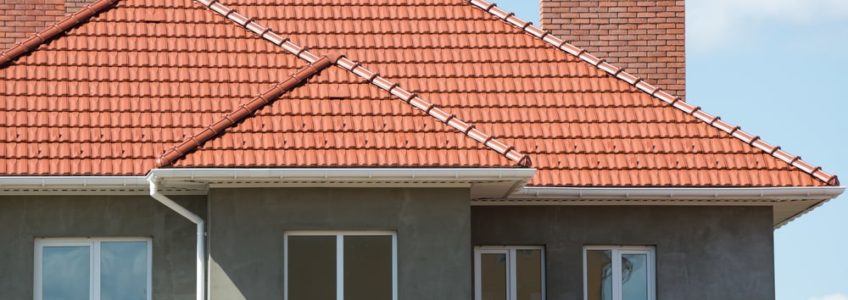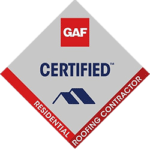8 Reasons to Consider Whether a Metal Roof Is Worth the Investment
When researching new and affordable roofing options for your home or replacing an existing one, thinking beyond the traditional asphalt may be worth it. Since many materials are available, metal roofing is becoming increasingly popular in the residential market.
Metal roofs are an attractive option because they are durable, energy efficient, and require minimal maintenance. This material gives your property a sleek, classy, and appealing look while being one of the most affordable and sturdy roofing systems available in the market today. Read on to learn about eight reasons why investing in a metal roof for your property is worthwhile.
What Is Metal Roofing?
Metal roofs are created with large sheets of tin, steel, copper, or aluminum and are the best alternative to the traditional asphalt roofing system. This type of roofing material is also available in hybrid metal mixtures that mimic the appearance of asphalt shingles.
Metal sheets for roofing are finished with a special coating capable of reflecting heat and preventing rust and other moisture damage. A roof built with metal can keep your home cooler in the summer season and boost the energy efficiency of the property.
Benefits of Metal Roofs
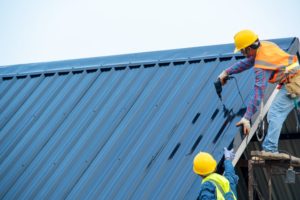
Here are a few of the benefits you can enjoy by investing in a metal roof.
1. Longevity
Metal panel roofs are highly durable and can last for many years. Metal panels remain protected from moss and fungal growth, unlike other roofing materials. Metal roofs are also resistant to pests like:
- Insects
- Birds
- Squirrels and rodents
- Bats
- Bees and wasps
With this roofing material, your home will be protected from severe damages that an asphalt shingle roof cannot provide. The overall cost of roof installation with metal panels can be higher than other systems, but its longevity and increased lifespan pay off throughout life.
2. Low Maintenance Costs
Unlike other roofing materials, metal panels are durable and resist moisture, meaning they require minimal maintenance and costs. Worrying about expensive repairs and maintenance is eliminated with a metal roof. Since they don’t collect snow, they are the best roofing system for snowy areas and in the winter season.
3. Energy Efficiency
As metal panels come with a special coating, they reflect the sun’s rays and heat to keep your home cooler in the summer season. As a result, you are less likely to use the air conditioner to maintain temperature. Proper insulation also protects metal roofs from excessive cooling and keeps your home warm to help reduce energy consumption.
4. Fire Protection
A metal roofing system is the most fire resistant due to its fireproof features. Metal roofs are less likely to catch fire during a natural disaster like a storm or wildfire. If your residential area is prone to thunderstorms or wildfires, a metal roof is the best option. A metal roof is less likely to catch fire or feed flame-like other traditional roofing systems. This roofing system adds additional safety layers to your personal property and your family from natural disasters.
5. Weather Resistant
Roofing material made of mater offers excellent protection from extreme weather conditions. Raindrops are likely to drain quickly on the metal roof, so there are no risks of leakage and moisture damage. Metal roofs protect your home from:
- Strong winds
- Hail
- Snow
- Ice
- Heavy rain
- And more
6. Environmentally Friendly
Metal panels are 100% recyclable and help reduce your carbon footprint that other roofing systems cannot. Most roofing material manufacturers even use almost 40% of recycled materials. According to research, metal roofing is an eco-friendly roofing option for both residential and commercial properties. Using recycled materials also increases the longevity of metal roofs to extend the lifespan of a metal roof. A good amount of money can also be earned by selling your outdated metal panels as scrap.
7. Increased Home Value
Installation costs of a metal roof can be higher, but it is effortless to justify the return on investment (ROI) as they can boost your home value from 2% to 6%. If you are about to move and want to sell your property after a quick renovation, you can consider installing a metal roof to increase the overall value of your property to sell it for an ideal amount.
Since metal panels are customizable, you can use them in any way to give your home an idea and appealing look. For instance, if you want your roof to compliment the overall design code of your home, you can buy metal panels in any color, design, or shape you want to curb the appeal of your home. Furthermore, you can also purchase metal roofs in different materials like zinc, copper, or aluminum with a high-quality finish and coating.
8. Affordability
No doubt, metal roofs are two or three times more expensive than other roofing systems, but they can save you money in the long run due to their longevity and minimal maintenance. Since the life of a metal roof is longer than other roofs, you can save a lot of bucks in terms of not replacing the roof anytime soon or spending money on expensive repairs and storm damage. As a result, you can enjoy the cost benefits with peace of mind.
Speak With an Expert About Metal Roofing Today
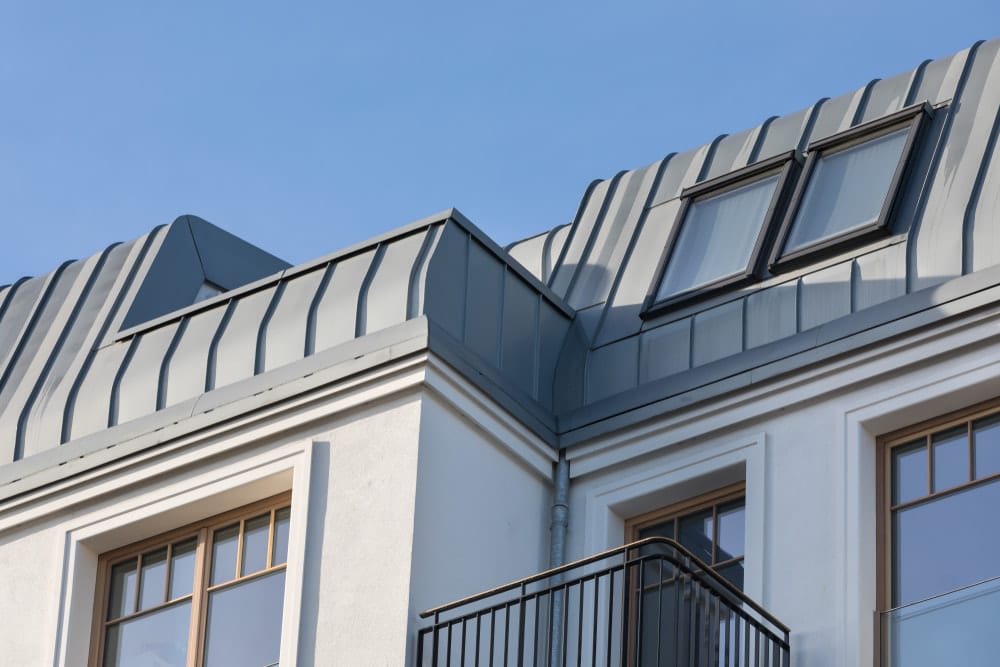
There are numerous reasons to choose metal roofs over other more traditional roofing materials. If you have decided to invest your hard-earned money in metal roofing, do your homework and do proper research to choose the right style, design, and color for your home. Spend enough time finding the best metal roofing contractors who are reliable and have years of experience in metal roof installation.
If you do so, you will end up with a metal roof that is about to protect your home, family, and other belongings for many years to come. Comparing available options is also a great idea to choose roofing materials and contractors worth investing in.
Contact A to Z Construction today to speak with one of our experts about metal roofing.
6 Signs It’s Time To Replace Your Roof
Buying a house is a monumental moment in a person’s life. When you purchase a home, you make a significant financial commitment and commit to putting down roots. You will no longer think about moving to a new apartment every year. Instead, you will be at your new house for several years, maybe even a lifetime.
However, more work goes into owning a house than you might think. Notably, most people do not think about what is over their heads, but it is essential. Unchecked, your roof could degrade in quality. As a result, you need to know the signs you need a new roof. Fortunately, we are here to educate you on the most common signs.
Water Damage in the Attic or Highest Floor
If there is water damage in your attic area or highest floor, that’s when you need to replace roof structures. Water damage at the upper end of your house is a sign your roof is no longer doing a great job of keeping the rain out of your home. Signs of water damage include moisture marks, brown, yellow, or gray stains, and paint peeling off the walls.
Furthermore, you should see if you have damp rafters or leaks. These are other signs your roof is damaged. However, it is crucial to note that not everyone can be a roofing expert. As a result, we recommend bringing in a roofing expert to do an inspection once a year. It will cost you some money upfront, but it could save you thousands of dollars in repairs.
Your Roof Is Sagging
If your roof is sagging, it is a sign you need a new roof. A roof sagging means moisture got trapped in the wood and rotted the boards under the roof. The result of this is the roof sagging away from its foundation. Replace a sagging roof immediately because it can sink further and cause more damage to your house’s structure.
A sagging roof is not as easy to spot as you might think. It is not as if it is sagging several feet, so you might not notice it immediately. You should check your roof for signs of trapped moisture. These can include rotting boards and sagging spots in the lowest sections of your roof.
Another thing you can do is see if you can see the sagging visually. Take several steps back from your house or even head to the other side of the street. Look at your home from several angles. The roof should appear straight at all angles. It should be easy to notice if your roof is sagging significantly.
Some Shingles Are Missing
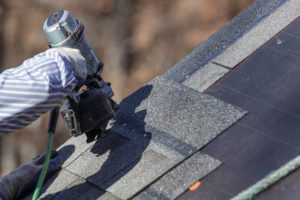
Roofing shingles are in place to create a watertight, wind-resistant seal that protects the inside of your house from the elements. As a result, assessing the state of your shingles is a good way to see if your roof has damage beyond repair. You can replace a few damaged or missing shingles, but several missing shingles can be signs you need a new roof.
If you notice your shingles start to curl, it is a sign they are no longer properly attached to the roof. As a result, they have sustained damage and are no longer effective. Strong winds and storms can cause your shingles to curl. You can speak to a roofing consultant to see if they think they can repair it or if it is time for a new roof.
Another thing to do is check your gutters and downspouts for shingle granules. If you notice several granules, it is a sign that your shingles are degrading. Even if they are flat and no shingles are missing, lots of granules in your gutter is a sign you need a new roof, as your current roof is nearing the end of its life.
Your Heating and Cooling Bills Are Increasing
Bills are expensive, but they are a regular part of life. You should know how much you pay monthly for your insurance, internet, and utilities. While utility costs vary monthly, there should not be a drastic shift. As a result, if you notice a drastic increase in your energy costs, it is a sign you need a new roof.
A damaged roof will no longer insulate your roof as well as it did in peak condition. As a result, it takes more energy to heat or cool your house, and your energy bill will increase.
Moss and Mold Have Started To Grow
Moss, mold, and other sometimes dangerous fungi start to grow in moist areas. As a result, if you notice mold or moss growing in your attic near the roof, it is a sign of excess moisture. As we have mentioned, moisture in your attic is a sign your roof is no longer doing an adequate job of protecting your house from the elements.
If you notice mold, you can try to wipe it away with a stiff brush. If the mold is in its early stages, that should do the trick. However, if it has grown significantly, you may need to contact a professional for assistance.
Your Roof Has Outlived Its Lifespan
Roofs do not last forever. Unfortunately, everything will eventually degrade, so there will come a time when you need to replace your roof if you plan on living in your house your whole life. There are three common types of roofs available to the everyday consumer, such as:
- Asphalt shingles
- Metal
- Clay tiles
Roofs with asphalt shingles usually last 10 to 20 years. Metal roofs can last 30 to 50 years, depending on the elements in your area. Finally, types of roofs with clay tiles last around 40 years.
Replace Your Roof Today
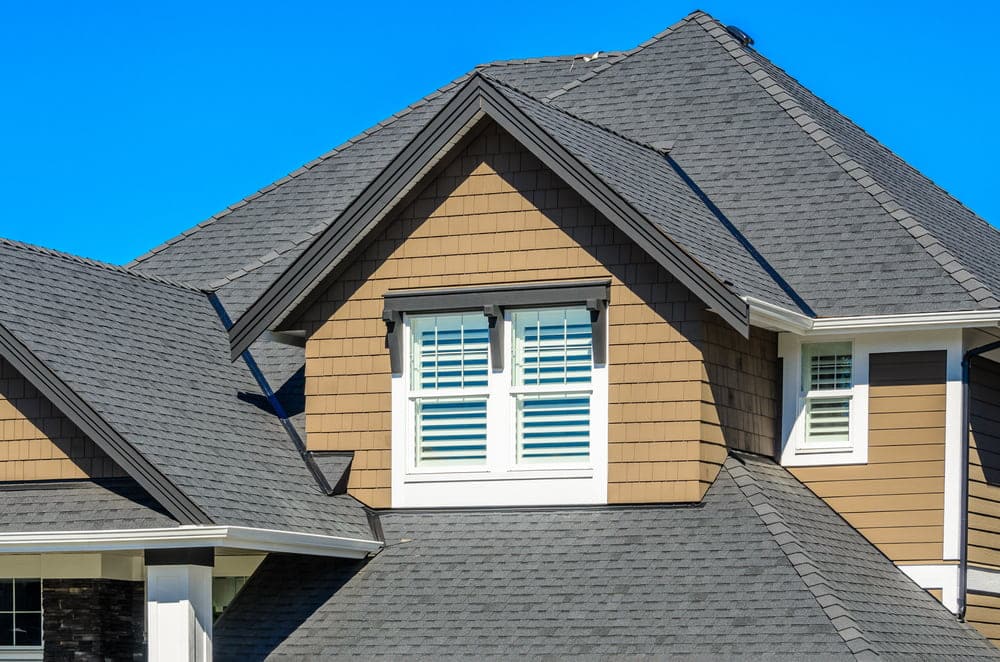
Your roof is one of the most fundamental pieces of your house. Without it, you are not protected from the elements. As a result, it is crucial to know the signs you need a new roof.
You can stay safe and secure if you keep an eye out for the six signs outlined above. Contact the roofing experts at A to Z Construction today to speak with an expert.
Does a New Roof Help Energy Efficiency?
If you’re asking yourself, “will a new roof save energy?” The answer is that it certainly can. One key reason you should go ahead with a roof replacement is the energy savings you can achieve using newer materials installed by experts. Roofs today are much different than roofs even 20 years ago, which has translated into higher energy efficiency.
So, if you’re wondering if a new roof helps energy efficiency, here are a few ways your investment can help you instantly reduce your energy bill.
How Will a New Roof Save Energy?
The newer your roof and the more experienced the team that is installing your roof is, the more energy efficient it will be, which makes installing a new roof by a trusted team a great way to save on energy costs. Here are some of the reasons new roof energy savings are possible:
#1. New Insulation
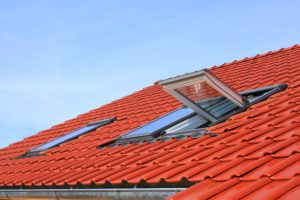
Chances are the insulation in your roof (if there is any) is old and newer technology works better at keeping warm and cold in or out. Recognizing extreme temperatures in your home despite constantly running the heating or central air conditioning could be a sign that it’s time to replace your roof. Proper roof insulation can be a major energy-saving resource as you have to spend less money heating or cooling to keep the rest of your home comfortable.
Better energy efficiency saves you money and energy by not having to heat or cool as often and also reduces wear and tear on your HVAC system. That prolongs its life and saves you money by not having to replace the HVAC components as often.
You can replace your insulation whenever possible, even if you do not replace your roof. Doing it during a roof replacement, however, addresses two needs at the same time.
Additionally, roofing materials are made better than ever, and part of that provides better insulation. That insulation helps keep warm air out in the summer and cold air out during the winter by creating a seal. It reduces the amount of moisture that can build in your attic by keeping humidity outside, and it protects your shingles from mold and rot, prolonging their life.
#2. Proper Ventilation
Ventilation and your roof work hand in hand, even if most people do not realize it. Common mistakes when installing a new roof can result in a loss of energy savings. Part of a roof installation is strategic venting to allow the roof to breathe. That lets hot air out in the summer, and it helps avoid ice dams during the winter.
When air cannot escape because of ventilation, your HVAC has to work much harder to cool the entire home because hot air rises, and if it cannot escape, it builds up. That makes it more difficult to cool hotter air on upper floors, so your HVAC works hard to address something that can be addressed just by adding proper ventilation.
When properly ventilated, your HVAC does not have to work as hard or as often, which cuts down on electricity costs, saving you money and saving energy at the same time. It also helps preserve the materials used in your roof, prolonging their lives by preventing underlayment from drying out, which saves costs by reducing costs for repair and replacement.
#3. Durability
Roofing has always been tough. It must withstand a constant onslaught of weather and temperature extremes to result in new roof energy savings.
While the interior of your house might be cool in the summer, your roof might be exceeding 150 degrees Fahrenheit. During the summer, that can happen day after day. In the winter, when you are warm, your roof endures ice, snow, and freezing temperatures. It also puts up with temperature fluctuations that can go from very hot to very cold in just a few hours during the fall and spring.
Does a new roof help energy efficiency, or is my durable old roof enough? While just about all roofing made from the 1980s on is extremely durable, roofing manufactured over the last 20 generally uses newer technology, and its strength is impressive. It simply puts up with weather extremes better than previous roofing materials. Additionally, a new roof can withstand the extremes of storms, resulting in less costs for storm damage repairs.
More durable materials mean your roof lasts longer, saving money over time. It also means your roof maintains its integrity in terms of new roof energy savings, saving energy, and energy costs. Many roofs today are built to endure heat from the sun better, resist high winds, and hold up better with ice and snow. They simply are built better.
#4. Solar Reflection
If you’re wondering how a new roof saves energy compared to older ones, one of the major updates to materials is solar reflection. Most roofing materials today reflect the sun’s rays rather than absorb them. Estimates are that high solar reflection on a roof can reduce temperatures by as much as 30 percent. Lowering surface temperature prolongs your shingles’ life and reduces the house’s overall heat.
Less heat to cool means running your HVAC less, the system lasting longer, and it being easier to cool your home in the winter.
One way to reduce solar absorption is by using colored shingles. Depending on your location, you can opt for some shingles and roofing materials that never absorb the type of heat that standard black shingles do.
#5. Modern Shingles Are Made Better
As with increased durability and lifespan, today’s shingles also have technology advancements that add to new roof energy savings. Most shingles come with an Energy Star Rating that indicates the materials used are as energy efficient as possible. Energy efficient materials mean you save money via longevity as well as because they have the Energy Star Rating.
Another benefit of roofing technology is that shingles’ wind rating has increased dramatically. Newer shingles can prevent wind damage more easily. In some cases, it can protect a roof up to winds exceeding 130 MPH. Not only will you save on repair and replacement costs, but these shingles also help warm and cool your home.
A roof that lets in the wind siphons off hot and cool air, depending on the season. That means your home is easier to heat and cool even during storms. By helping contain both better when appropriate, your HVAC does not work as hard. Just another reason why it’s a no brainer when asking yourself “does a new roof help energy efficiency?”
New Roof Energy Savings
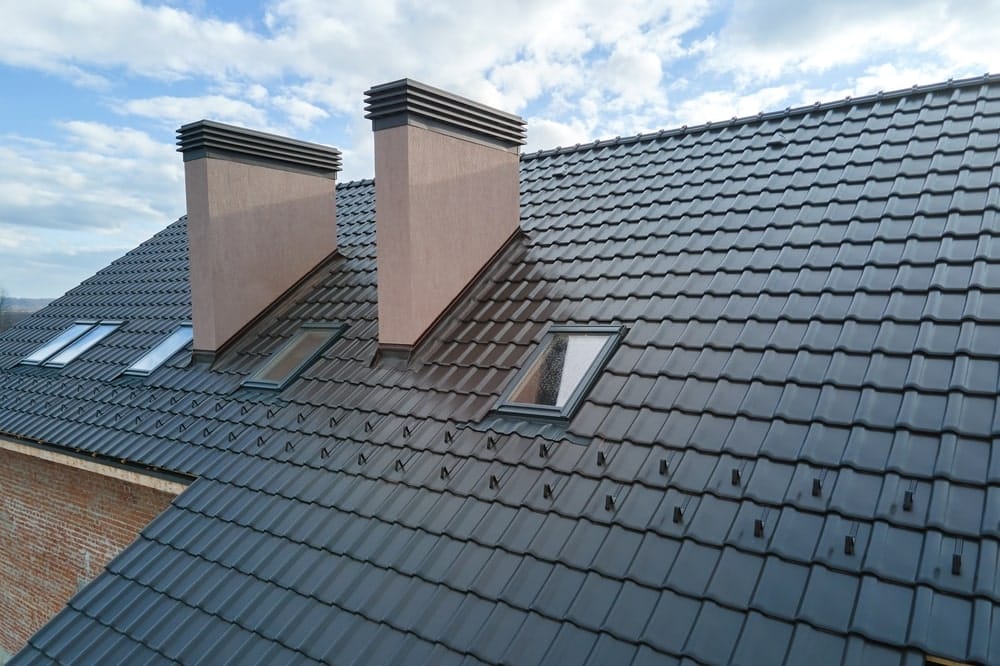
The bottom line to will a new roof save energy is that it can. With a trusted team and the advancements of modern materials, a new roof helps energy efficiency and increases durability as it adapts to current climates and temperatures.
If you notice that your energy costs are through the roof, quite literally, contact A to Z Construction today for a consultation.


